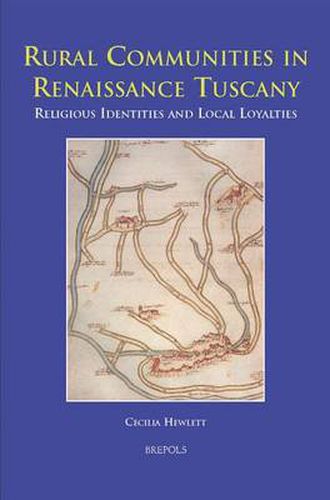Readings Newsletter
Become a Readings Member to make your shopping experience even easier.
Sign in or sign up for free!
You’re not far away from qualifying for FREE standard shipping within Australia
You’ve qualified for FREE standard shipping within Australia
The cart is loading…






At the conclusion of the fifteenth century and well into the first half of the sixteenth, Florence underwent radical political and social transformations. The republic, which had nurtured the cultural phenomenon of the Renaissance, was finally overthrown and the Medici returned triumphant as outright rulers of the once-free commune. Throughout this period, the administration of the Florentine territory continued to be one of the single most important issues faced by successive Florentine governments, and yet very little is known about the people they governed. Accounting for over two-thirds of the total population, the inhabitants of small rural communities played a significant part in the shaping of this territory. This study explores the nature of these communities and the relationships they forged with the central authorities; it provides an overview of the extraordinary diversity of rural communes, and looks in detail at three areas of the Florentine territory. The communes of Gangalandi, Scarperia, and the communities located in the Pistoian mountains provide the vivid contexts in which the fluid natures of local religious, social, and political ties are examined. The character of each of these rural communities was unique, challenging not only the Florentine government’s mechanisms of control, but our own understanding of the ‘peasant’ as a social category. Hewlett demonstrates that these communes were not simplistic social organizations, but rather vibrant communities of individuals who pursued a vast range of different activities within a series of complex cultural networks. Rural Communities in Renaissance Tuscany also addresses the importance of religion to these communities; an exciting addition to a field that has been until now dominated by the study of urban religious practice.
$9.00 standard shipping within Australia
FREE standard shipping within Australia for orders over $100.00
Express & International shipping calculated at checkout
At the conclusion of the fifteenth century and well into the first half of the sixteenth, Florence underwent radical political and social transformations. The republic, which had nurtured the cultural phenomenon of the Renaissance, was finally overthrown and the Medici returned triumphant as outright rulers of the once-free commune. Throughout this period, the administration of the Florentine territory continued to be one of the single most important issues faced by successive Florentine governments, and yet very little is known about the people they governed. Accounting for over two-thirds of the total population, the inhabitants of small rural communities played a significant part in the shaping of this territory. This study explores the nature of these communities and the relationships they forged with the central authorities; it provides an overview of the extraordinary diversity of rural communes, and looks in detail at three areas of the Florentine territory. The communes of Gangalandi, Scarperia, and the communities located in the Pistoian mountains provide the vivid contexts in which the fluid natures of local religious, social, and political ties are examined. The character of each of these rural communities was unique, challenging not only the Florentine government’s mechanisms of control, but our own understanding of the ‘peasant’ as a social category. Hewlett demonstrates that these communes were not simplistic social organizations, but rather vibrant communities of individuals who pursued a vast range of different activities within a series of complex cultural networks. Rural Communities in Renaissance Tuscany also addresses the importance of religion to these communities; an exciting addition to a field that has been until now dominated by the study of urban religious practice.